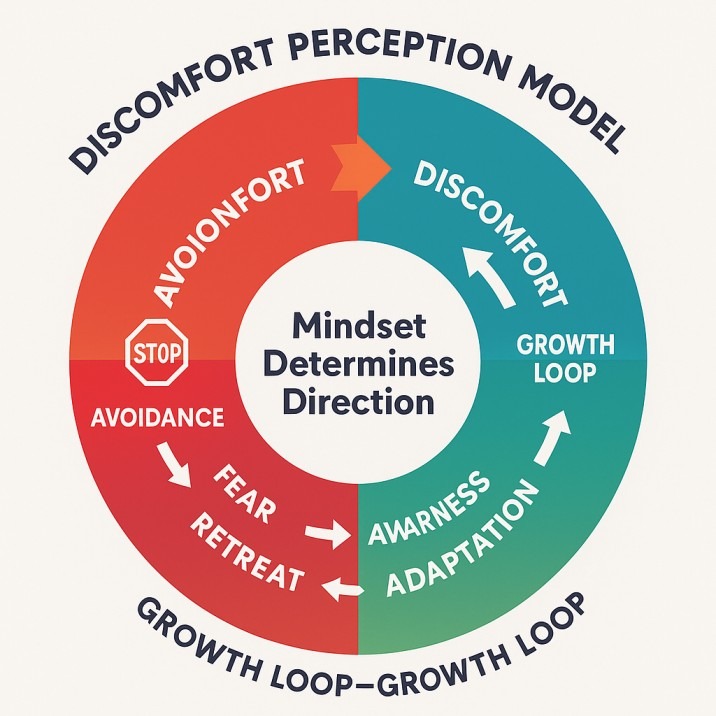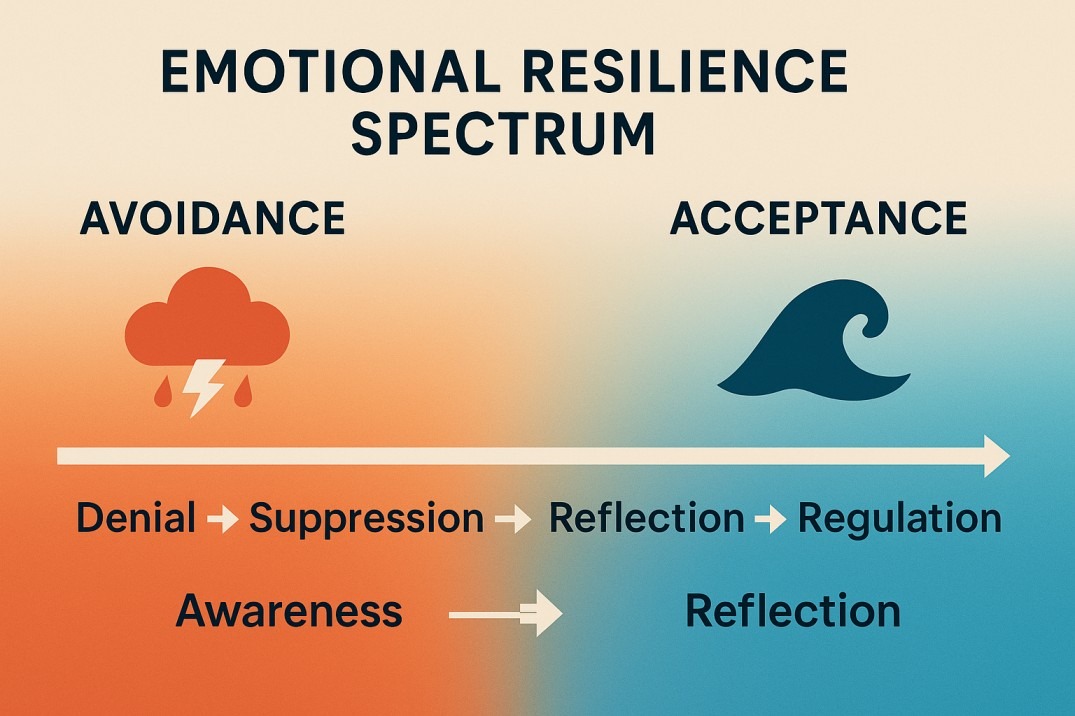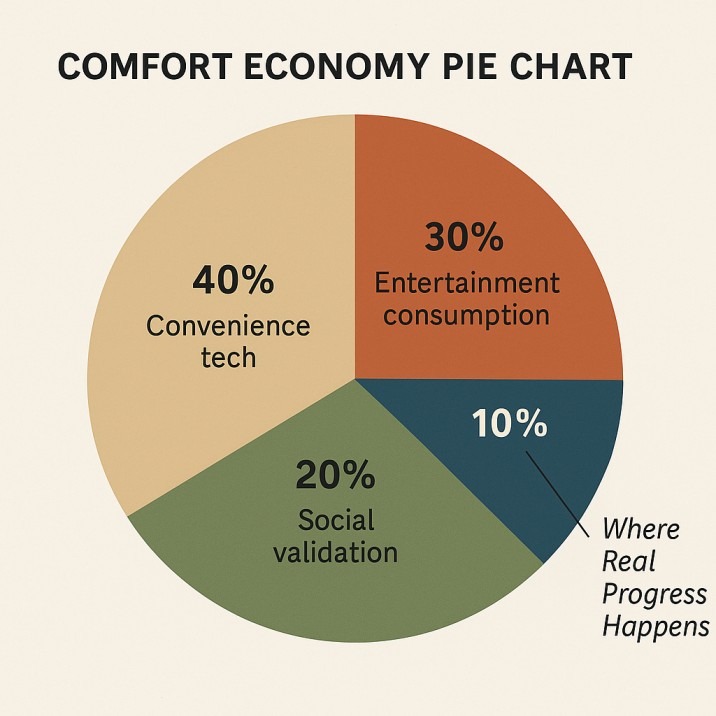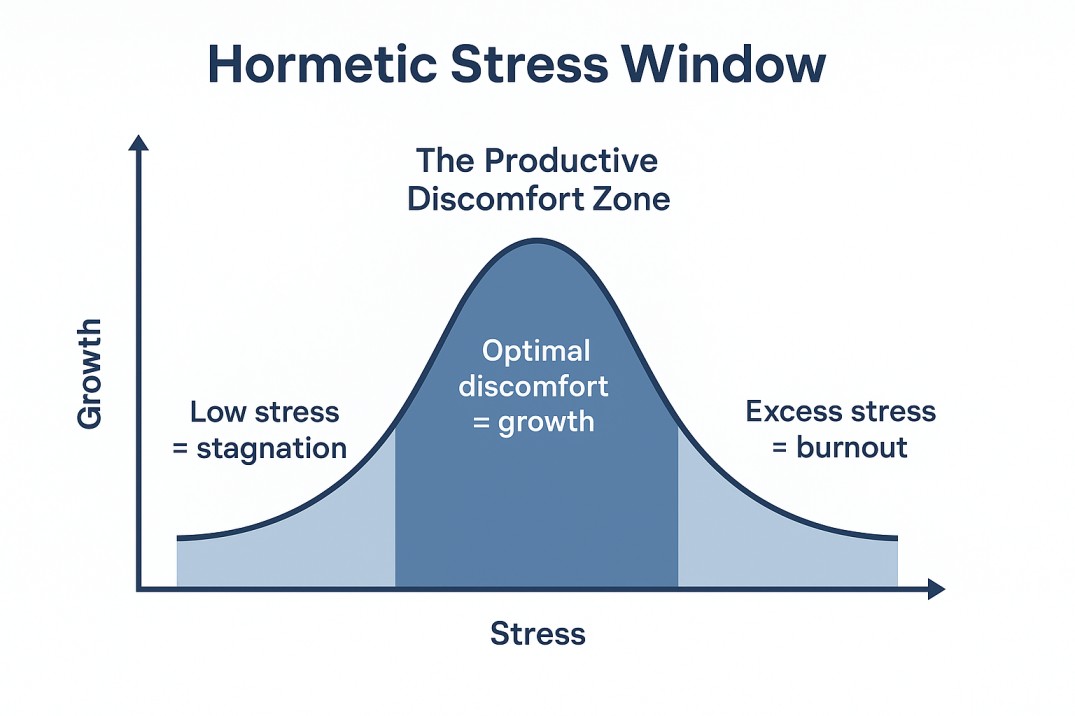In the pursuit of mastery, the world often glorifies talent, discipline, and intelligence. Yet beneath every consistent achiever lies something far less glamorous but infinitely more powerful — discomfort tolerance. This quiet resilience separates those who give up when the process hurts from those who push forward when growth demands friction.
The truth is simple but often ignored: all meaningful progress lives just beyond the threshold of discomforts.
Discomfort tolerance is the hidden advantage that separates consistent achievers from those who quit when challenges arise. It’s the ability to stay engaged through struggle, uncertainty, and pressure without losing focus. High performers reframe discomfort as data, interpreting tension as progress rather than threat. By training both body and mind to withstand friction, they expand endurance, emotional control, and confidence, turning discomfort into the foundation of lasting growth and mastery.
The Paradox of Discomfort
Human beings are wired to avoid pain. It’s biological self-preservation — the brain perceives discomfort as danger. But in the modern world, this reflex works against growth. When we feel discomfort during learning, training, or change, it’s rarely a threat; it’s adaptation in motion.
High performers understand this paradox deeply. They don’t seek suffering for its own sake — they learn to interpret discomfort as data. When muscles ache after training, or self-doubt appears before a major project, it’s a signal that transformation is underway.
In this sense, discomfort isn’t an obstacle. It’s evidence of progress.
Discomfort in the Mind: Reframing Struggle
Most people experience discomfort as chaos — frustration, anxiety, or confusion. High performers experience the same sensations, but label them differently. They see struggle as feedback. Instead of thinking, “I’m failing,” they think, “I’m learning.”
Cognitive reappraisal — the act of reframing — is a subtle psychological skill that multiplies discomforts tolerance. When you can reinterpret emotional friction as fuel, your endurance expands. Scientists studying elite athletes and military professionals consistently find that perception of discomfort, not its intensity, predicts persistence.
In short, discomfort itself doesn’t stop us — our relationship with it does.

Physical Discomfort: The Body’s Honest Teacher
In physical training, discomfort is visible and measurable. It’s the burning of lactic acid, the fatigue of repetition, the quiet negotiation between mind and muscle. High performers in sports, fitness, and even endurance professions treat discomfort as a dialogue — not a punishment.
They learn to differentiate harm from effort. Pain signals injury; discomfort signals expansion. That distinction transforms training from endurance into evolution.
Research in exercise physiology shows that the body adapts to sustained discomfort thresholds — meaning what feels unbearable today becomes manageable tomorrow. This principle of progressive overload isn’t confined to gyms. It applies to every domain — business, learning, creativity, and leadership.
Discomfort’s the biological price of adaptation.
Emotional Discomfort: The Silent Crucible
If physical discomfort builds stamina, emotional discomforts builds character. It’s found in rejection, failure, embarrassment, or uncertainty — the arenas that sculpt emotional intelligence.
High performers don’t suppress emotional discomfort; they study it. Instead of avoiding hard conversations or painful reflections, they move through them deliberately. That capacity for emotional endurance becomes a superpower in leadership and relationships alike.
The ability to stay grounded when others panic, to respond instead of react — these aren’t gifts. They are the result of conditioning the mind to withstand internal discomfort.
The world rewards people who can remain calm in chaos. And calm, paradoxically, comes from practicing discomfort until it no longer feels like danger.

Discomforts in Ambition: The Growth Equation
Every ambitious project begins as an idea — and every idea meets resistance. High performers are those who endure the discomfort between concept and completion.
Entrepreneurs feel it when launching something uncertain. Artists face it in creative droughts. Students meet it in the confusion before understanding. Across disciplines, the pattern remains identical: discomforts is not the opposite of success; it’s its incubator.
Studies on deliberate practice by psychologist Anders Ericsson show that experts spend more time operating in the discomfort zone than novices. They purposely practice at the edge of their ability, constantly failing just enough to force adaptation.
That repetition — of challenge, feedback, and adjustment — creates fluency. Comfort never does.
Discomforts as a Cultural Shift
Modern culture sells comfort — convenience apps, instant gratification, emotional validation. Yet, comfort rarely leads to satisfaction. It sedates curiosity and dulls ambition. The resurgence of cold exposure, mindfulness, and endurance training reflects a societal hunger to reclaim discomforts as meaning.
High performers across generations — from stoic philosophers to Silicon Valley builders — converge on one truth: life’s richest rewards live on the far side of discomfort. Not because suffering is noble, but because avoiding it keeps us small.
When we strip away the filters of ease, discomforts becomes a mirror. It shows us who we are, where we resist, and how much we’re capable of enduring.

Training Discomfort Tolerance
To cultivate discomfort tolerance, one doesn’t need to run marathons or meditate for hours. It starts with micro-resistance — choosing the harder but truer path in small decisions. Speaking up instead of staying silent. Sitting with an awkward pause instead of escaping it. Finishing a project past the moment enthusiasm fades.
These moments, repeated daily, rewire the nervous system’s relationship with discomforts. What was once perceived as unbearable becomes manageable. What was once avoided becomes the norm.
Neuroscience suggests that repeated exposure to manageable stressors — called hormetic stress — strengthens both physical and emotional resilience. Like muscles under tension, our tolerance for discomfort grows only when tested.
High performers aren’t immune to stress. They’re simply fluent in it.

The Silent Confidence of the Discomfort-Trained
There’s a distinct calm in people who’ve made peace with discomfort. They don’t flinch when outcomes are uncertain. They don’t crumble when plans fail. This isn’t arrogance — it’s trust born of endurance.
Discomfort teaches self-trust. When you’ve walked through uncertainty often enough, you stop needing guarantees. That stability becomes magnetic — in careers, relationships, and leadership.
In every field, the people we admire most — from surgeons to soldiers, entrepreneurs to artists — are those who have rehearsed discomforts until it feels like home.
The world doesn’t need more people chasing comfort. It needs more people who can stand steady when comfort disappears.
Final Thought
Every goal worth chasing requires crossing the border between comfort and discomforts. It’s in that uncertain zone where competence turns into confidence, and aspiration turns into achievement.
If you want to perform at the level few reach, don’t ask how to make things easier. Ask how to stay when things get hard.
Because in the end, success doesn’t belong to the most gifted — it belongs to those who are willing to be uncomfortable the longest.
Andrea Balint is a writer and researcher focused on human behavior, workplace psychology, and personal growth. Through her work at CareersMomentum, she explores how mindset, leadership, and emotional intelligence shape modern careers. With a background in communication and HR development, she transforms complex ideas into practical insights that help readers build clarity, confidence, and professional purpose.
